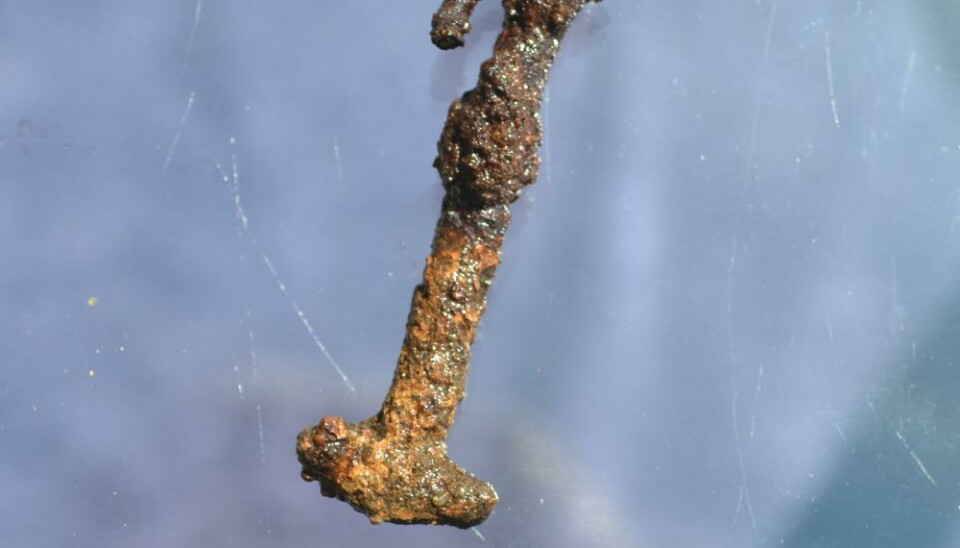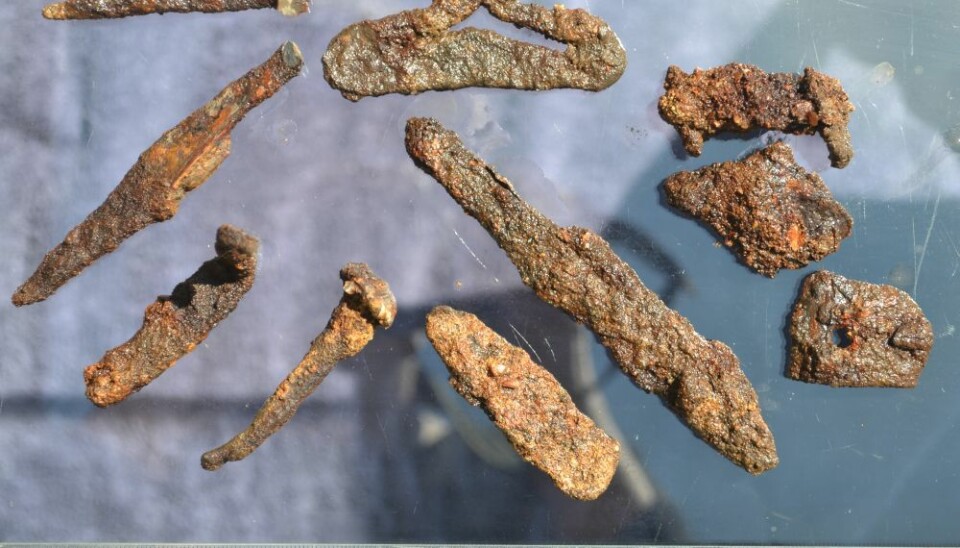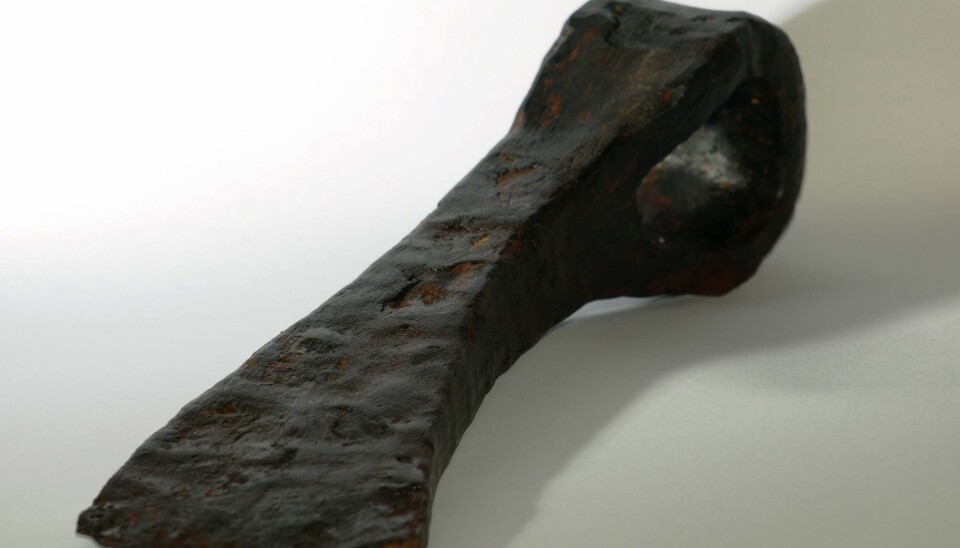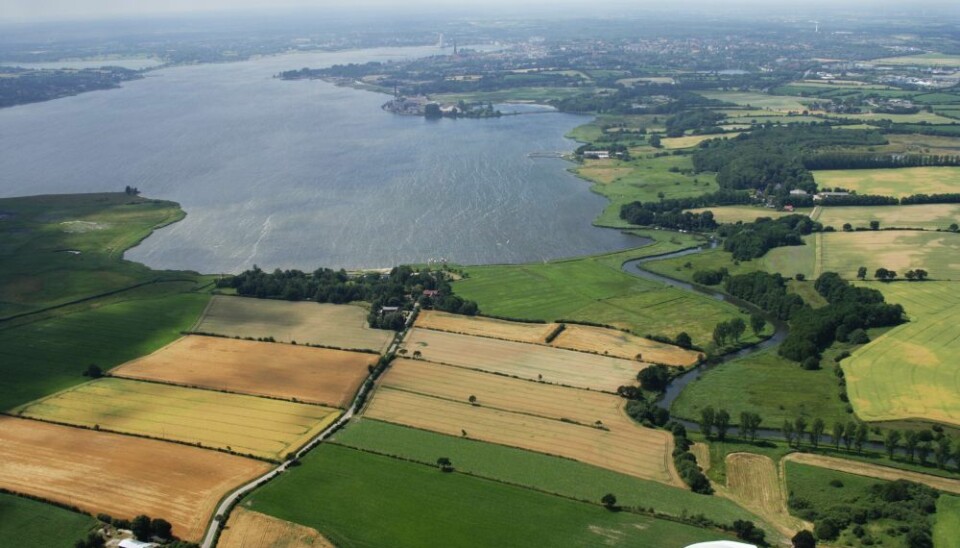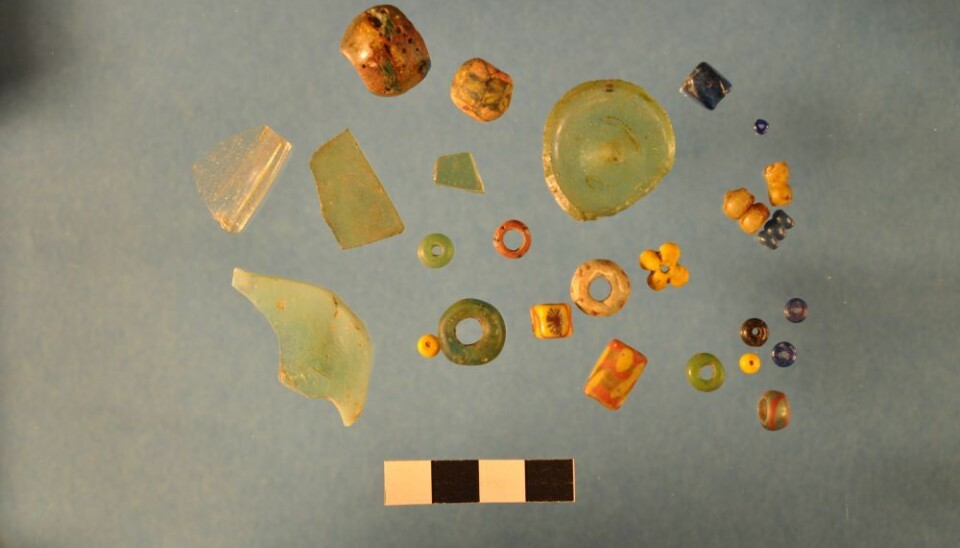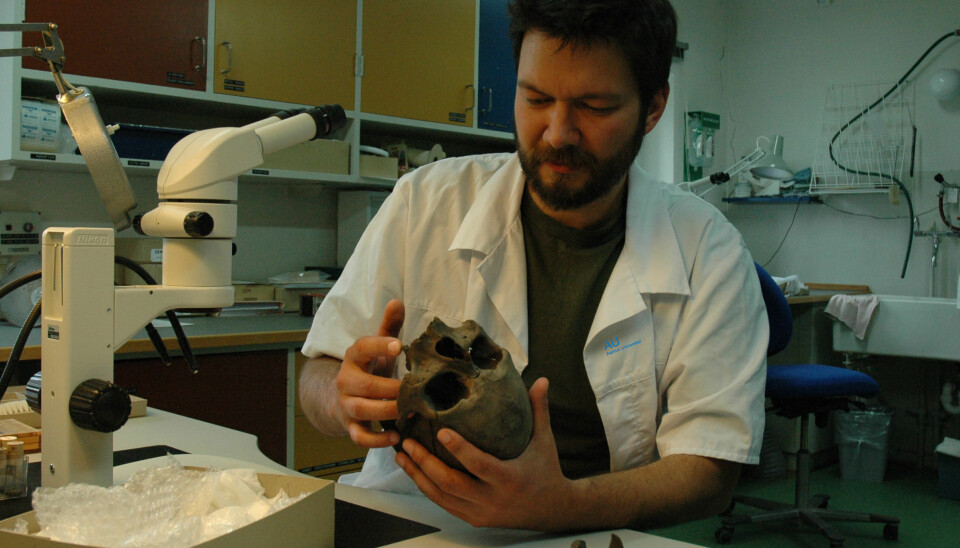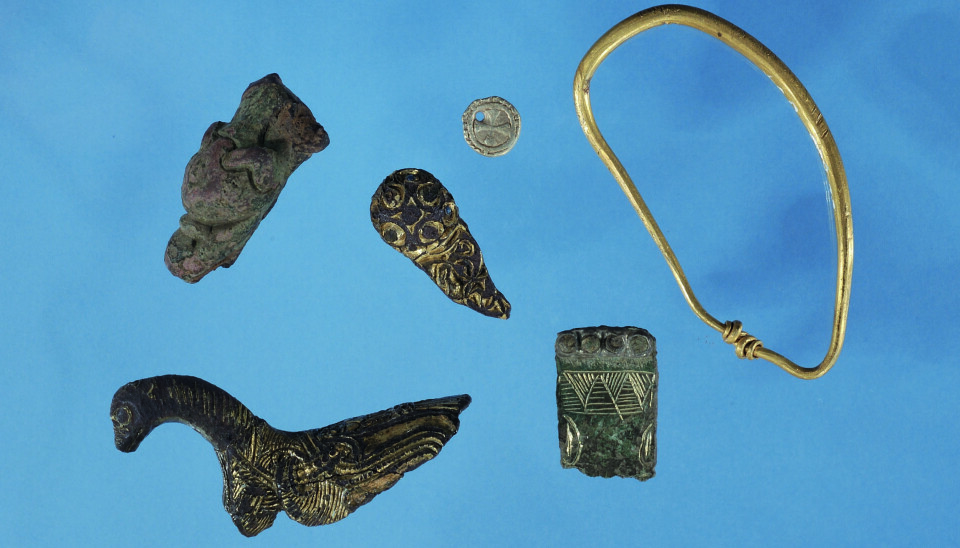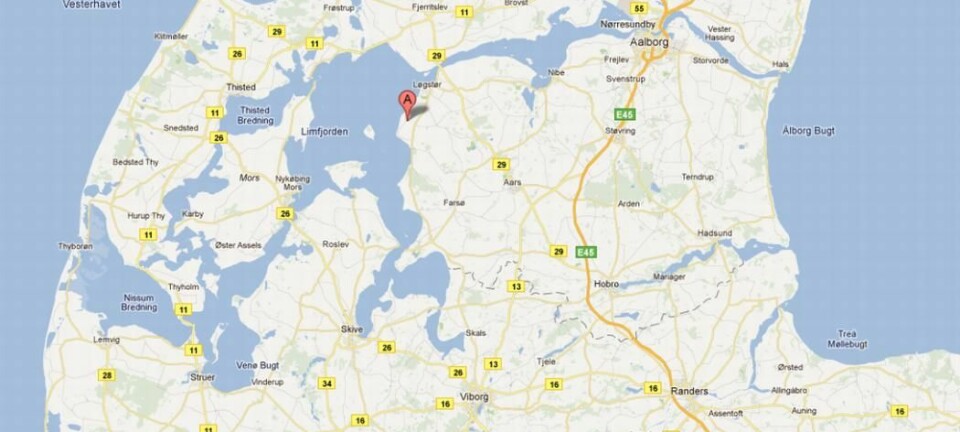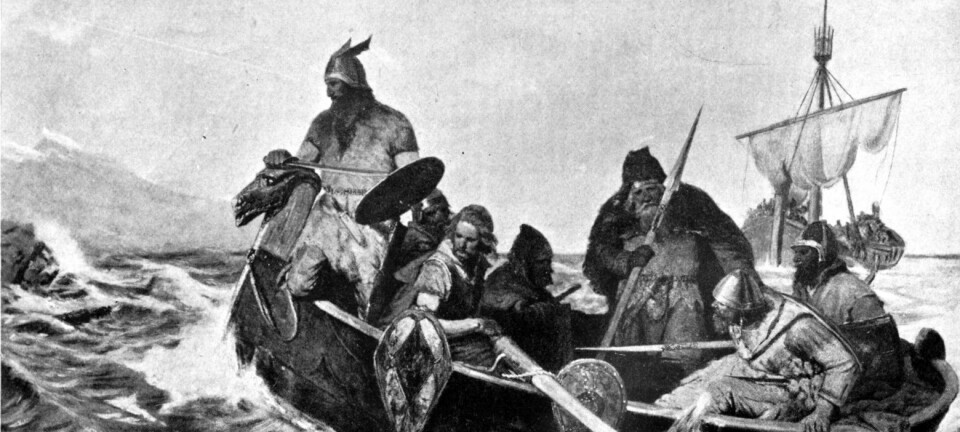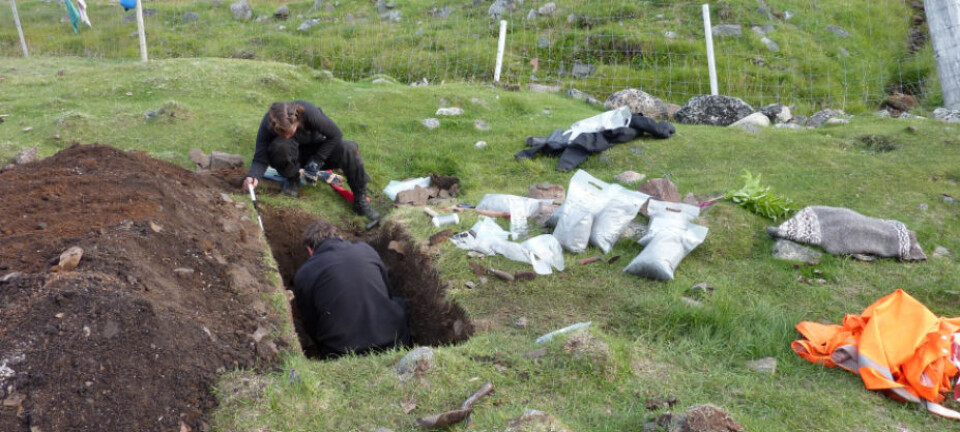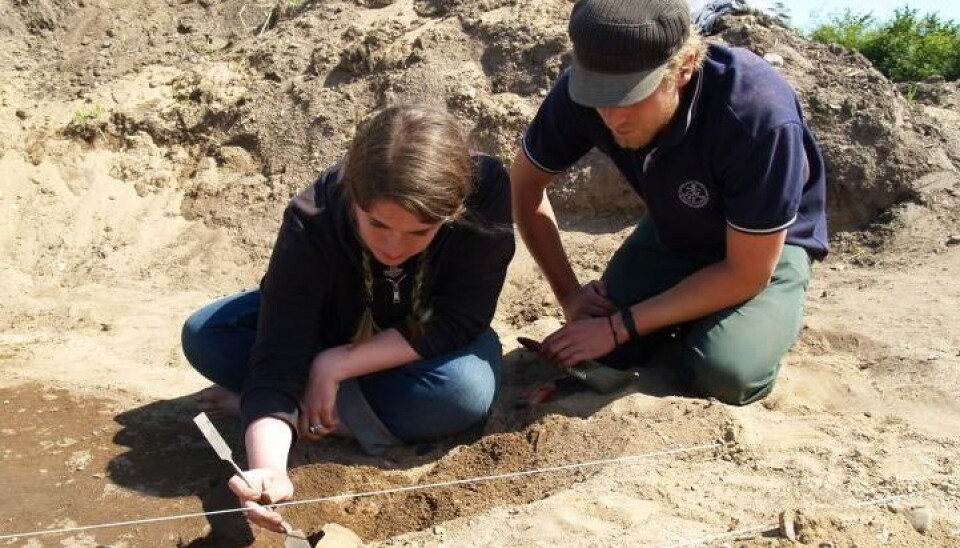
Legendary Viking town unearthed
The hidden centre of power for the first Danish kings may well have popped up from the soil in Northern Germany. Archaeologists have surprisingly found some 200 houses and piles of weapons.
Danish archaeologists believe they have found the remains of the fabled Viking town Silasthorp by the Schlei bay in northern Germany, near the Danish border.
According to texts from the 8th century, the town served as the centre of power for the first Scandinavian kings.
But historians have doubted whether Sliasthorp even existed. This doubt is now starting to falter, as archaeologists from Aarhus University are making one amazing discovery after the other in the German soil.
"This is huge. Wherever we dig, we find houses – we reckon there are around 200 of them,” says Andres Dobat, a lecturer in prehistoric archaeology at Aarhus University.
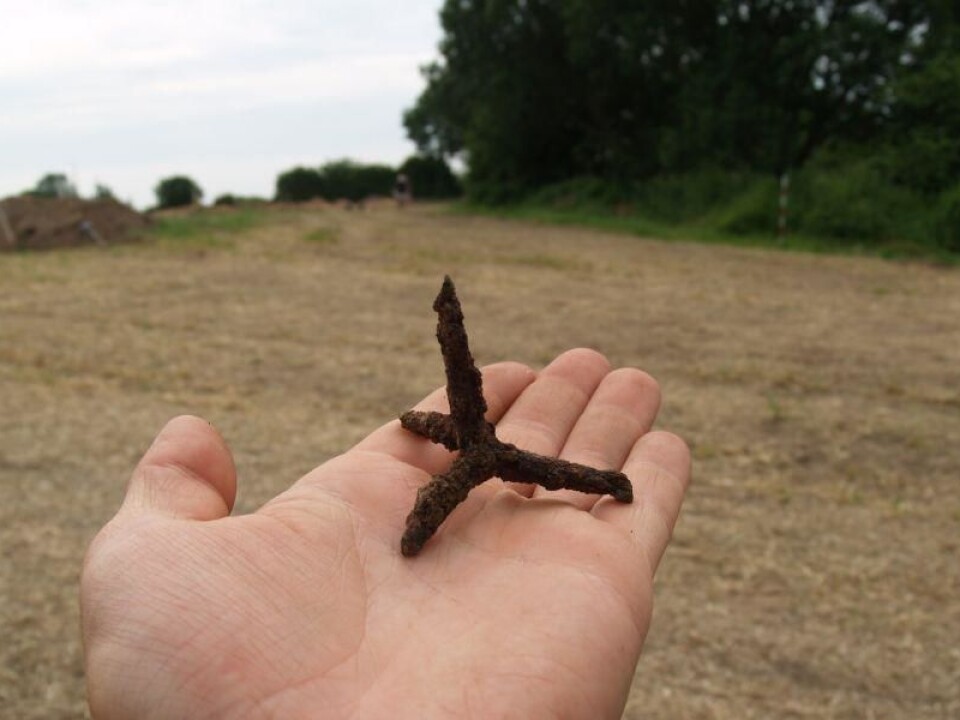
“And the houses we have dug up so far were filled with finds: beads, jewellery, pieces of broken glass, axes, keys and arrowheads.”
One of the first Scandinavian towns
The finds support the archaeologists’ interpretation that the town belonged to the Viking elite and functioned as a military strategic centre.
“Both Dannevirke and Hedeby – two of the world’s largest monuments from the Viking Age – could be controlled from this place,” says Dobat.
“We’re still not fully aware of what significance this site has had. But our excavations have already given us a completely new perspective on many things, including the military organisation in the Viking Age and the nature of the first towns in Scandinavia.”
A strategic location
The first written sources for the history of Denmark – the Royal Frankish Annals from 804 – say that Sliasthorp played an important role in the Viking Age.
The aggressive Viking king Godfred, the text says, decided to turn the town into a military power centre near the border of the early Danish kingdom. At the start of the 9th century he arrived with his army to what was then a small settlement and turned it into a key strategic military location.
Strategically it was a clever choice of location:
- The long Dannevirke fortification was located only a few hundred metres to the south. So when there was a need for troop reinforcements at the border to the Carolingian Empire in Germany, they could easily step in from Sliasthorp.
- The town’s numerous pit-houses could accommodate all of King Godfred’s warriors. This enabled the king to strike back in case Jutland was attacked by Charlemagne (c. 742-814), who ruled what we now know as Germany. He headed a superpower, which had just conquered and forcibly Christianised all of Northern Germany and which could potentially occupy Jutland too.
- With its location by the Schlei bay, Viking ships could easily transport personnel, weapons and food to and from the town.
Sliasthorp was attacked by warriors
It appears that King Godfred was wise to make preparations to defend himself in Southern Jutland. The archaeological finds back up the written sources, showing that the king's military power centre was later attacked.
“We have found the remains of a huge longhouse which was burned down at some point during the 10th century,” says Dobat.
"The house was more than 30 metres long and nine metres wide, and in the remains of the pillars that once stood by the wall and the entrance, we found arrowheads and caltrops. This suggests that the house was attacked in a military conflict and burned down.”
The king lived with the chief
The attack took place long after King Godfred's death. But even if he had been alive, it’s still unlikely that he witnessed the attack. Back then, kings were always on the go and rarely spent long periods at Sliasthorp.
As a consequence, the daily running of the town is likely to have been administered by the town chief, who lived in the lavish longhouse.
King Godfred and his men only lodged in Sliasthorp when they had business in the area.
Silasthorp, a town for the elite
The king wasn’t the only one travelling in and out of the Viking town. The town’s population figures fluctuated several times within the same year, depending on whether there was a need for craftsmen and soldiers in the area. Only a select group of the absolute elite Vikings lived in Sliasthorp over extended periods.
Based on the industrial design and the building style, Dobat reckons that a majority of the houses in the town were only used a few weeks a year. At times there were 100 people in the town; other times perhaps over 1,000.
“We are in pre-Christian times. So it’s conceivable that people gathered in the houses when they had sacrificial feasts, political mass meetings, military training, or if something was going on at Dannevirke.
All the dirty business was in Hedeby
Sliasthorp, which was the size of 14 football pitches, was much smaller than the nearby Hedeby, which spread over 50 football pitches.
“In the Viking Age, people spread out,” says Dobat. “Craftsmen, the marketplace and all the other dirty things were in one city. The elite – religious leaders and the military – had however withdrawn to another town. So the regional elite did not live in Hedeby. It was located some five kilometres away.
“Our studies have given us a completely new view on the anatomy of the very earliest cities. It differs greatly from what we see in the Middle Ages and today.”
An addition to Danish history
The new find is no less interesting to a historian than to an archaeologist. Lasse A. C. Sonne, who holds a Phd in Viking history and is a lecturer at the Saxo Institute at the University of Copenhagen, is fascinated by the news:
“If Dobat has discovered at royal estate in that area it is of course interesting – not least if the town can be linked to Hedeby,” he says.
“From the Viking town of Birka, near Stockholm, Sweden, we know a similar model. There the great city lay isolated on one island, and on the neighbouring island was a royal estate from which the city could be governed.”
Historians and archaeologists have long debated whether it was merchants who founded cities in the Viking Ages, or whether it was the towns’ chiefs.
“If Dobat’s interpretation of the finds is correct, they – together with finds from Birka and others – paint a picture where chiefs were involved, and where large Viking cities didn’t just emerge out of the blue,” says Sonne.
Sliasthorp, a precursor of Hamburg
And sure enough, the datings have revealed that Sliasthorp was built some 100 years before Hedeby.
So the newly discovered town may very well have been the place from which the merchant city of Hedeby was planned.
Andres Dobat believes this means that the entire urban development in the northern German/southern Denmark region began with Sliasthorp.
“This is common European history. We have actually found the origins of what we today call Hamburg,” says Dobat.
"When the Vikings built this town and Hedeby, they were a precursor of Schleswig, which in the early Middle Ages was the great trading city in the region. Schleswig, in turn, was the precursor of Lübeck, which today has given way to Hamburg. We’re digging at the roots of world economy.”
The excavation work is still being done. Since Dobat discovered the first objects with his metal detector in 2003, there have been two excavations – in 2010 and 2011.
Later this summer the team, which also consists of archaeologists from the universities of Harvard, Cambridge and Paris, will travel back to the exciting area near the town of Füsing, some 30 kilometres south of the Danish-German border.
(The box below this article describes how Dobat found the hidden Viking town.)
--------------------------------
Read this article in Danish at videnskab.dk
Translated by: Dann Vinther

